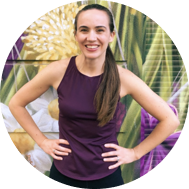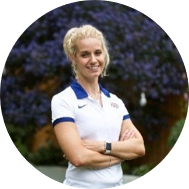Life/health
Various medical approaches exist to improve the well-being of people suffering from chronic diseases such as CKD. In the field of complementary medicine, the use of mind-body interventions (MBI), encompassing therapies like Yoga and Pilates, have been gaining interest.(1) These therapies have been shown to protect against the onset of serious illnesses as well as improving the clinical picture of chronic diseases by promoting metabolic, physiological and psychological benefits.(2,3)
Yoga and Pilates encompass physical postures, breathing, meditation and relaxation techniques which link the body and mind. These techniques can be adjusted to be feasible even for physically limited patients. It is not surprising that Yoga also improves clinical outcomes in CKD, as shown in over 10 different clinical studies.(4-14) Similar studies exist for Pilates demonstrating health benefits also in renal transplant patients.(10-20)
Visit the Life/library to find out more!
Recognizing that kidney patients are keen to learn about suitable exercises they can do at home, the Life/2021 program includes a series of yoga sessions that will provide participants with information and practical demonstrations.
Our body movement experts have developed special training sessions that can be adapted to the individual health conditions of CKD patients.

Joëlle Fixson is a certified yoga teacher specialized in healthy movement and pain management. She draws from her own experience of living with fibromyalgia for over two decades to adapt her classes to best suit her students’ capabilities. She believes that yoga is for everyone and can help nearly anyone to feel better, no matter their situation.

Kim Saha is a qualified physiotherapist and a certified Pilates instructor. Kim has gathered a wealth of experience in helping people with injuries to release chronic pain thanks to her work in a physiotherapy clinic and by providing emergency medical care for the British Athletics Team. Having researched CKD, she is thrilled to use her great expertise to help patients suffering from this disease.
Literature:
1) Chu SWF. 2021 Complementary Therapies in Medicine Vol. 57, 102652.
2) Anderson E. 2019 J Sport Health Sci Vol. 1(1), pp. 3-10.
3) Booth FW. 2012 Compr Physiol Vol. 2(2), pp. 1143–1211.
4) Pandey RK. 2017 Intern J of Yoga Vol. 10(1), pp. 3-8.
5) Yurtkuran M. 2007 Compl Methods in Medicine Vol. 15(3), pp. 164-171.
6) End-Stage Renal Disease Intra-dialysis Lifestyle Education Study. 2015 NCT02361268.
7) Comparison of the Effectiveness of Virtual Reality and Video Assisted Exercises in Pediatric CKD. 2019 NCT04010981.
8) Birdee GS. 2015 Journal of renal nutrition Vol.25(5), pp. 445-453.
9) Pilot Study. 2014 Journal of Alternative and Complementary Med Vol. 20(5), pp. A51-A52.
10) Reilly-Spong M. 2015 Contemporary clinical trials Vol. 42, pp. 169‐184.
11) Journeys to Wellness: a Transplant Candidate Study. 2010 NCT01254214.
12) Gross CR. 2016 Quality of life research Vol. 25(1):1-196
13) Gross CR. 2017 Contemporary clinical trials Vol. 57, pp. 37‐43.
14) Gross CR. 2009 Clinical trials (London, England) Vol. 6(1), pp. 76-89.
15) Deghidi A. 2016 Int J Health Sci Vol. 6(1), pp. 246-253.
16) Sadat Z. 2017 J Bodyw Mov Vol. 21(1), pp. 86-92.
17) Kheirkhah D. 2016 Crit Care Nurs J Vol. 9(3), 344.
18) Nemati C. 2020 Qom Univ Med Sci J Vol.14(7), pp. 1-11.
19) Pinto JSST. 2015 Journal of Bodywork and Movement Therapies Vol.19(4), pp. 604-615.
20) Rahimimoghadam Z. 2019 Compl Therapies in Clinical Practice Vol. 34, pp. 35-40